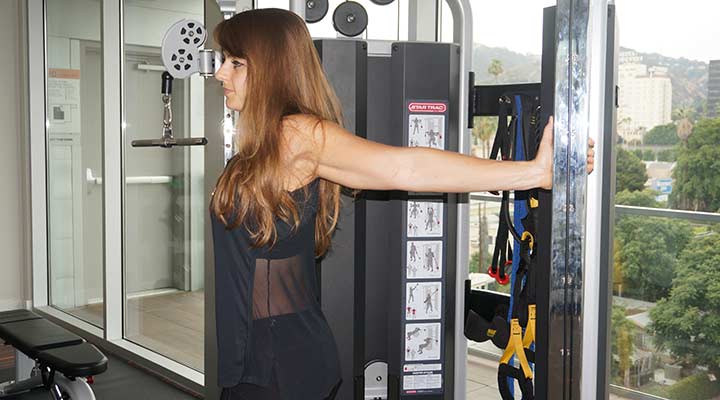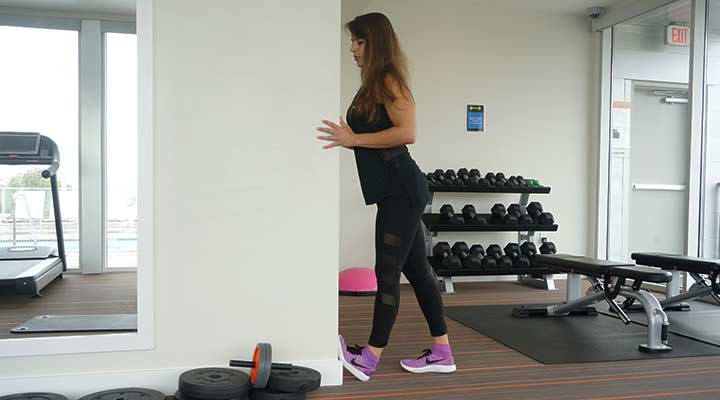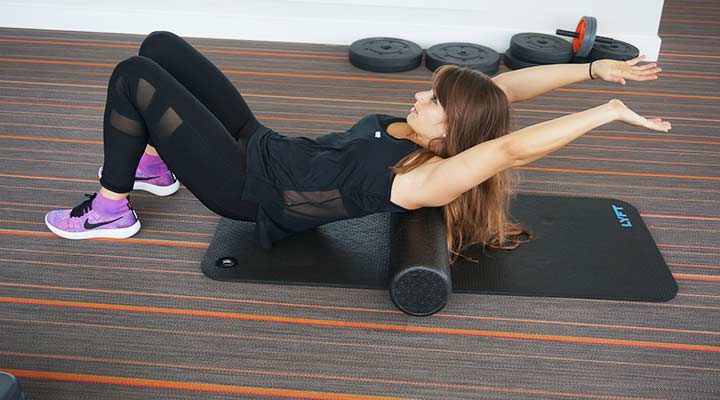
Moving Stretches to Help Ease the Pain of Relocating
Mar 31, 2023 / Alyssa Duranty
Before pursuing a career as a personal trainer, Alina Astilean worked in finance (and in the cold weather of San Francisco), but it wasn’t the life hoped for. So she packed up her peacoats and headed to Hollywood for a new life, but she was savvy enough to do moving stretches before any heavy lifting. Now she teaches her clients how to get fit and stay healthy, whether they are lifting barbells or boxes.
“Personal training was just a hobby, but now it’s been my job for six years,”; she said.
For movers looking to prevent (or treat, if it’s too late) muscle soreness from lifting and loading mountains of boxes and heavy furniture, she said there’s several stretches that may help.
“What’s important is to stretch and use moves that mimic the muscle movements you’ll make when moving,”; she said.
If you’re ready to relocate but want to make sure you stay nimble in the process, we’ve got tips from Astilean and another Southern California personal trainer to help keep you comfortable along the way.
Stretch Muscles and Joints Before Moving Heavy Items
Before you carry any boxes, stretch your arms, back, legs and hips (the muscles you can expect to use a lot during a move) to prepare them for the heavy journey ahead.
“Focus on dynamic stretching (where you use momentum to flex muscles), and mobility work (to target joints),”; said Astilean. “Air squats and high knees will also help get your heart rate up and blood flowing.”;
A lower back stretch, like the one pictured above, will help target muscle groups that often ache post-move.
“Sore backs from not properly lifting boxes and furniture is a common problem,”; said Lori Pederson, a part-time personal trainer in Orange County, Calif. “Especially if you don’t exercise regularly.”;
She recommends crossing arms across the body to stretch arm muscles that can also get exhausted early in a move.
Take an Hourly Break to Stretch Your Arms and Back
Every hour or two, depending how much time you have to move, take a break to stretch arm and other muscles.
“Give yourself a reset,”; said Astilean. “Grab a pole (as seen above) or a wall and stretch until you can feel it in your muscles.”;
She recommends holding all stretches for 20 to 30 seconds to feel the benefits of each move.
If you’re climbing stairs or ramps, stretch your calves by propping your foot against a wall and applying pressure (seen below).
During your breaks, Pederson advises drinking plenty of water (not soda or juice, and hold the libations until the post-move party) to stay hydrated.
“Water will help prevent the muscles from cramping up during a move,”; she said. “Don’t forget to stop and rotate your arms around to loosen up the shoulders.”;
Massage Muscles Post-Move to Avoid Lingering Pain
To avoid soreness, Astilean recommends stretching after a move and staying active to keep blood flowing through your muscles.
“Target the delts (shoulders) and lats in your back, because that’s where you will working your upper body,”; she said.
If you do feel sore for a day or two, Astilean recommends soaking in an Epsom salt bath and using a foam roller to massage the sore muscles (pictured above).
“Apply as little or as much pressure as you want when you roll over the muscle,”; she said. “It’s like a deep tissue massage.”;
And a lot cheaper!
If you don’t have a foam roller, Pederson said you can freeze a water bottle and use that instead.
“A frozen water bottle is great to roll under sore feet,”; she said. “For other areas, you can wrap a tennis ball in electrical tape (to make it softer) and use to apply pressure to sore spots.”;










